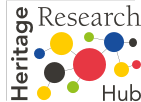Project facts
Presentation
The need for evidence-based tools that enable conservation scenario modelling has become increasingly relevant to address the complex challenge of conservation, especially in times of climate change. Recently, non-destructive methods of analysis and dose-response functions have provided a step-change in response to this need. Infrared (IR) spectroscopy combined with data science has been successfully applied in the quantitative determination of chemical and physical properties of many heritage materials of organic origin, providing crucial data for their characterisation. Based on this data, dose-response functions allow for the evaluation and comparison of the likely preservation outcomes achievable through different management options. However, there is still a lack of systematic research about the uncertainty associated with both demographic modelling and non-destructive analyses. The EU-funded UNCERTIR project aims to explore this uncertainty.
Impacts & Results
UNCERTIR will investigate the contributions to the overall uncertainty which could originate from different sources (e.g., the large inhomogeneity typical of the heritage materials, methods of spectral data collection, pre-processing techniques and multivariate regression models, lifetime modelling). Specifically, we intend to explore the uncertainty using classical and Bayesian statistics, the latter has never been applied in this field of research.
A clearer understanding of the uncertainty will enable a broader use and acceptance of both modelling and IR spectroscopy-based quantitative methods within heritage institutions, and this, importantly, will support prospective preservation planning.
